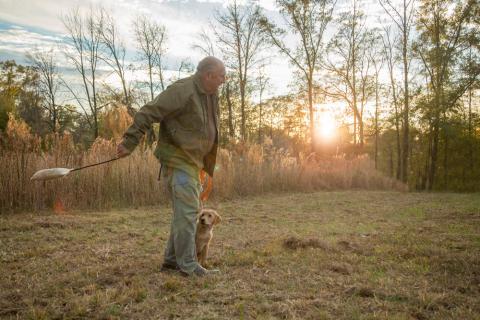Dana R. Rogers | Originally published in GameKeepers: Farming for Wildlife Magazine. To subscribe, click here.
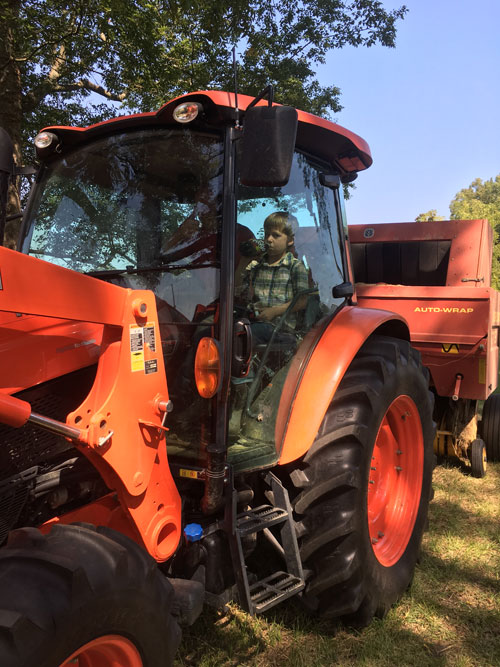
involved, keep them interested and we’ll have generations of
gamekeepers to come.
I love to introduce youth and new hunters to the sport and have the chance to do so several times each year. Whether it's my family members, friends or acquaintances, getting them outdoors and interested in wildlife and their habitat is much more than just pulling a trigger. Last fall I took two young men on their very first deer hunts and it was extremely rewarding. Seeing their beaming smile and the excitement in their voice as each 10 year old anticipated the day was inspiring.
The process was informal, but I used several encounters with the youngsters to talk with them and explain things, to describe my passion for the deer and taking care of their habitat. There were shed hunts with walks through the woods, pointing out rubs, scrapes and different plant species, and later on practice, beginning with shooting bb guns, .22 rifles, bows and then of course several practice sessions with their choice of center fire rifles to be used on the hunt. Showing them each step in the process gives them knowledge and a background to go along with the pastime we all love so dearly. We also reviewed pictures of deer to go over anatomy of shots and angles for various positions and weapons. I've used many approaches in the past to generate interest and help put a “spark” in them to hopefully “light the fire” that will burn for a lifetime.
One new area that has become a much more important piece in my educational mentoring to new hunters is the relationship that habitat, seasonal needs and overall management practices affect the animals they are hunting. With youngsters such as the ten year olds I so often mentor, I can’t just jump into intermediate or advanced levels. I have to keep it basic and correlate the animals and their needs to something that a youngster can comprehend. More importantly, I have to try and make it interesting and as fun as I possibly can to hold that interest and fuel that fire in hopes I can “grow” more hunter/managers for the future.
Make it Fun, Interesting and Think Outside the Box
Depending on the time of year and conditions, I always try to pair fun activities with management projects that I need to accomplish at that time of year. Spend as much time educating and doing fun activities, those that will stimulate their brains as well as serve a constructive purpose for the property. Rubs, scrapes, tracks and sheds are some wintertime topics I teach and make a note of for future hunts. So long as the weather cooperates and they are enjoying the time afield I always like to take a few youngsters out in February and March on my scouting and shed hunting trips.
Every rub we came to I pointed out something different to the kids, either by explaining what it is in basic terms or by noting biological significance and travel direction. Scrapes are the same way. The kids can learn as much as you think they are interested in and can absorb. Either in the snow or on soft paths, tracks can really interest the youngest newcomers. In one area I spend a lot of time, deer yard up and number well over 200 in a fairly small area. The trails are compacted and sign is everywhere, leading to a lot of teachable moments. Shed hunting during this time is a favorite activity and extremely beneficial to the management plan.
By using it as a sort of “Easter egg hunt” for newly minted deer hunters, it can really be quite exciting for them when they find that first antler. Admittedly, I often “seed” a few antlers I have already located and point them in the right direction. You have to keep it fun and exciting for the younger kids or they will lose interest quickly and become bored – remember you’re competing against video games and TV. Inevitably, I find a winter killed carcass or two. That is another great opportunity for education and for management related information that can help teach the kids of life and death in regards to the population, habitat, predators and stress factors - explaining things like good shot placement (wounding), winter stress from the rut and food availability, the relationship between prey and predators and diseases like EHD or CWD.
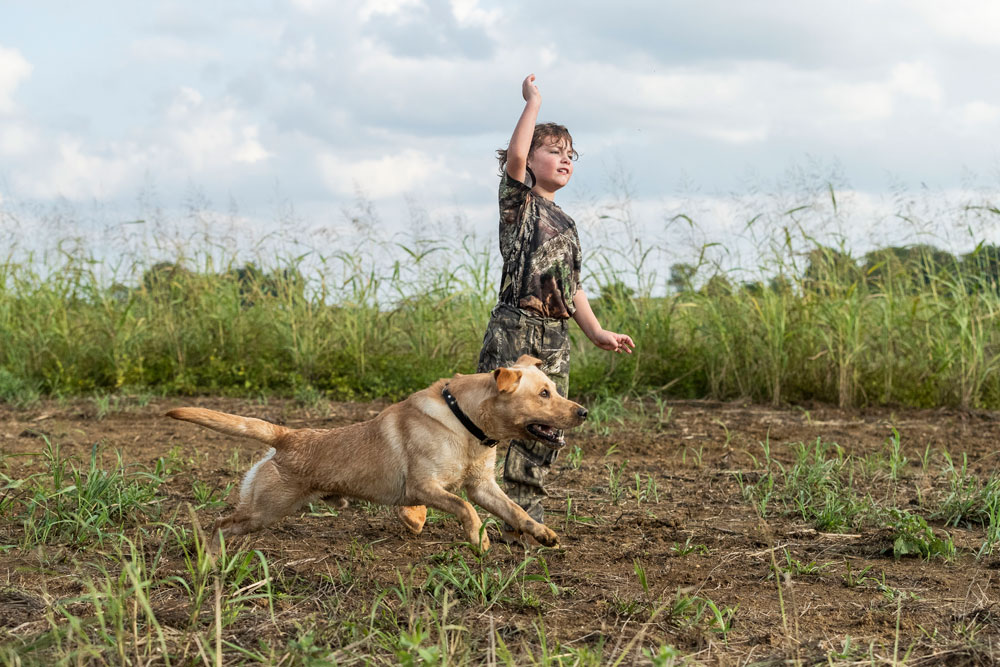
A few months later, if I am out with the kids and working, I look for other opportunities. May is the time of fawns, bunnies and bird eggs. I don’t find fawns often, but the thought of it excites the kids or an adult like my wife. We tend to see several cottontails and squirrels and bird nests filled with eggs are usually fairly easy to locate. We see a lot of doves in our area and I can typically find a nest that is low enough to lift the kids up to look at.
Whether they are just empty nests, filled with eggs or even hatchlings, the natural world is a wonder to many youngsters who have a keen interest in wildlife. Those spring days in the field are often used to seed clover or plant a few trees. Take the time to let them run a hand-held spreader with a little clover or small grain seed into an area you are plotting to get them involved in the planting process at an easier stage. Even driving a 4- wheeler in a safe and supervised manner can be a big help and teach them increased responsibility. They will take ownership and pride in having helped in the planting process and feeding the wildlife. Planting a few trees is a great family event and also shows them our responsibility to be great land stewards. In a few years they will see the rewards of that effort and have great memories. I would limit the number of trees planted though, as that gets to be work pretty quickly.
Later in May or early June things have popped even more and there is life all over the landscape. Worms, bugs, weeds and flowers abound and you can use each as a teaching moment for both “the hunting” as well as “the wildlife and property management” aspects. Getting ready to take the kids out to the pond to fish? Take a potato fork or small shovel and dig up some worms or nightcrawlers. There will be many in good rich soil as well as other bugs. Teach the kids they are there to keep the soil healthy and provide food for all the birds in the sky and turkeys too.
Weeds and flowers are out now so you can show them different weed species and discuss how they rob the food plots of moisture and nutrients. Many are also great deer and turkey food and provide great browse and forage. Bees need those flowers and explaining how they pollinate other plants that we rely on is very significant.
A small spray bottle with glyphosate or if they are larger/older, a backpack sprayer can give them another opportunity to participate in upgrading the habitat and cleaning out small food plots. Teach them how to use herbicide safely. Into June and later during the summer I often work on making sure my ponds are healthy and holding water. Frogs, turtles, ducks and chicks will be nearby then and provide great viewing and learning opportunities. Bentonite may be spread to form a clay barrier that will hold water for the deer and other wildlife. Seeing all the wildlife and perhaps fish will offer much wonder to the youngsters and be a great opportunity to show off aquatic species they wouldn’t see in the surrounding landscape.
Later in the middle of summer when things have dried out and the cool season plants are getting ready to go in the ground, I focus on seeds, weeds and brush piles. The 4-wheeler or my small tractor gets some work to prepare the smaller plots of dried up spots in fields I want to convert to brassicas or a mixture of oats and winter wheat. Though not ready for any heavy equipment, I get the kids involved with that hand held spreader again to seed small areas or even throw some of the inexpensive small grains by hand. They can ride with me while I get after a few of the weed patches I may have missed - showing them how tough and hardy some weeds can be. We also amass a few brush piles with dead trees or limbs and explain how those brush piles will be great for rabbits this winter.
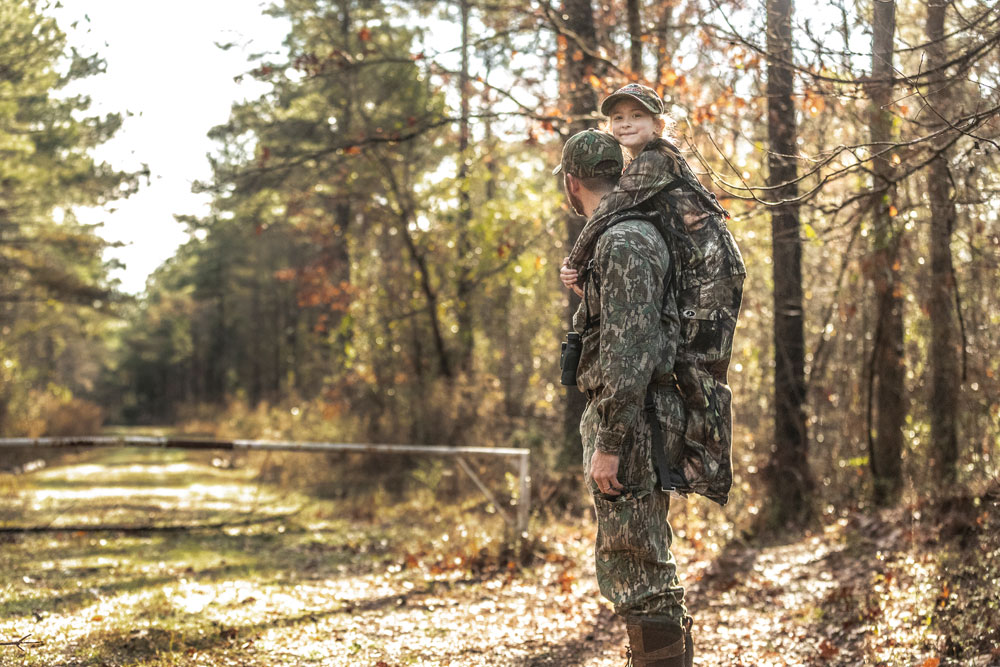
Whether through shed hunting, doing small work projects, shooting or short educational opportunities, teaching the why and when can be extremely beneficial to piquing the interest of a new gamekeeper. Arrowing a nice buck is one of the biggest thrills a hunter can have, but for some, they are missing out on an even bigger thrill while in the outdoors. Introducing a newcomer to the woods can be rewarding in many ways. It's not just about spending time outside, but about sharing those experiences with someone you care about. It adds a totally different dynamic to an already enjoyable experience. When my wife decided to give hunting a try, I was excited.
I had quite a bit of experience taking young kids and teenagers but very little with taking an adult whom with I had such a close relationship. At times my patience was tested, I certainly know hers was. In the end it was worth every second of it. She was able to harvest her first two big game animals that year - a beautiful pronghorn on the western plains habitat and a late season whitetail doe in frigid and snowy conditions. The time we spent together outdoors will be some of my most cherished memories for the rest of my life. Taking someone new into the places I love so much, not only gave me the benefit and enjoyment of sharing experiences, but also helped me take a step back and look at my hunting skills. I had to break everything down step by step, it helped me analyze why I was doing things in a particular sequence and some areas where they were lacking.
Many times, I put too much thought into what the deer are going to do and over analyze the situation. Most of the time, someone new to the sport is going to have simplistic ideas of what could happen and will often be right. They may ask questions or just listen intently. Take the opportunities afield to answer their questions and show them how much you cherish the outdoors. I’ve been blessed to mentor several young men over the past decade with both rifle and bow. They have that spark in their eye and a few have a passion for the outdoors that rivals any hardcore hunter out there. If you are planning on introducing someone new to world of hunting I would suggest starting off in a high traffic area where the chances of seeing deer are good. Someone who is new to the sport will lose interest quickly if there is nothing going on. Being outdoors is enjoyable at any time for hunters, but bringing someone along and sharing the experience adds a new form of enjoyment.
A Few Key Elements
Keep it fun and social with new hunters and managers. Don’t just rush into the work. Do some target practice or make a game to help entertain and educate. It’s very important to make the first experiences draw them in and leave them wanting more. Ignite that spark for learning and the love of wildlife that will help turn them into the next generation of gamekeepers. Use positive reinforcement to engage and laud the good decisions and behaviors. Great shot! Thanks for helping with the management by taking that doe.
Make a big deal of any successes and capture lots of photos to make memories for a lifetime Don’t push “management standards” that you may have onto them too quickly. All newcomers I take typically harvest a doe or two first, after that I let them decide on which buck they’d like to take if they have the available license. Every deer is a trophy to us, and is especially so to that young or new hunter. Make a big deal over them taking even a small buck or doe. I make it a point to discuss outdoor television, media and the fact that those are “hunting highlights.” Just like a football or basketball game gets broken down into snippets for ESPN, so do outdoor programs.
I tell them how many years I bowhunted before I ever took that first doe and the fact that, perhaps I’ve taken some nice bucks, but it took me decades to learn and improve the habitat to make it a consistent event. Newcomers can be easily discouraged if they go out a few times and don’t see or take the same type of animals they see in magazines and on TV and the distinction and effort involved must be laid out clearly to keep disappointment and disinterest from creeping in. Make them successful by harvesting does and that first buck, no matter how large or small. Management defined is a process designed to be implemented to achieve a set of results.
By introducing a youngster or new hunter to management, my desire is to create people in the future who understand the importance of habitat creating and conservation, how that habitat is the key to wildlife thriving and there being plenty to enjoy for them and their families in the future. I explain why we have a sanctuary and what that means to the deer, pheasants and other wildlife that inhabit the properties we manage. How limited hunting pressure gives them a safe place to hide, breed and survive. Why the food plots we work on are key to their winter survival and the native grass stands and tree work is crucial to winter survival and spring fawning/nesting success.
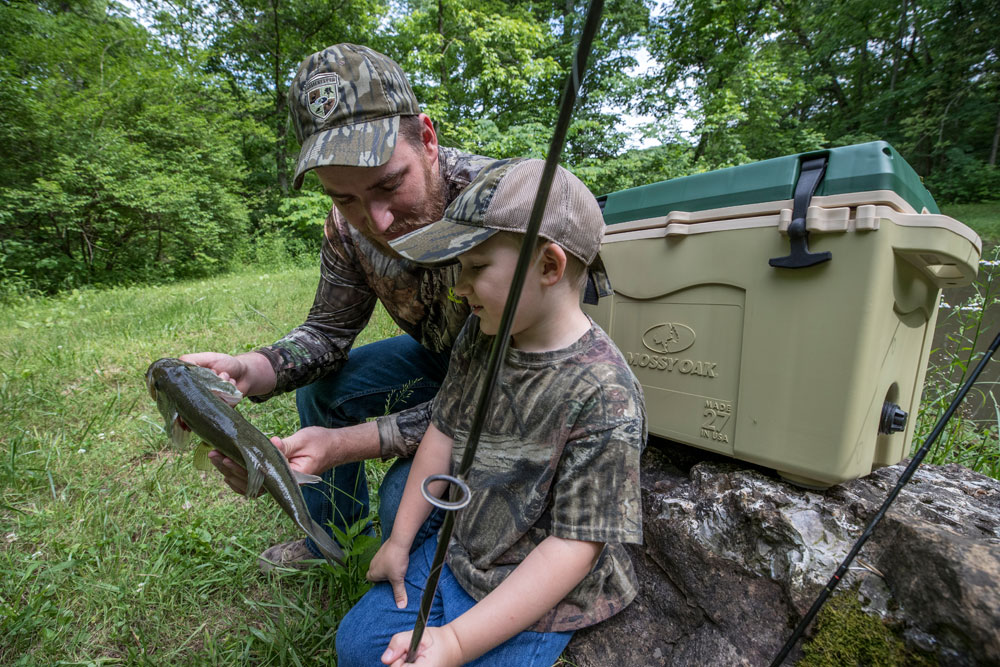
We might work on a pond to provide water or build a brush pile that will help rabbits as well as provide a small screen from the prying eyes of a road hunter. I ask them to count sheds, pellet piles, rubs, scrapes etc. and we document that. Explain how that ties in and reward them for their efforts I’m sure most of my fellow gamekeepers share many of the same feelings. Personally, I’ve come to get more excitement and pride from the habitat work and the results they provide the wildlife, my friends and family. Hanging and checking trail cameras have provided years’ worth of memories of deer I’ve never even laid eyes on. Seeing the dozens of whitetails feeding in a standing field of soybeans, corn or turnips while I glass or photograph them from a blind gives me a great sense of pride.
All those hours and sweat equity paid off and the results are right there to see. The same goes for taking my wife and son on their first hunts and preparing them to sit in a stand or blind alone. Taking my neighbor’s sons on their first deer hunts or an old high school friend’s kids that may not be blessed with land to hunt themselves have yielded fantastic moments I replay in my mind over and over. By introducing youth or adults to hunting through management practices and projects, I believe you can grow the future gamekeepers. Respect the land, respect the landowner and respect the wildlife.















